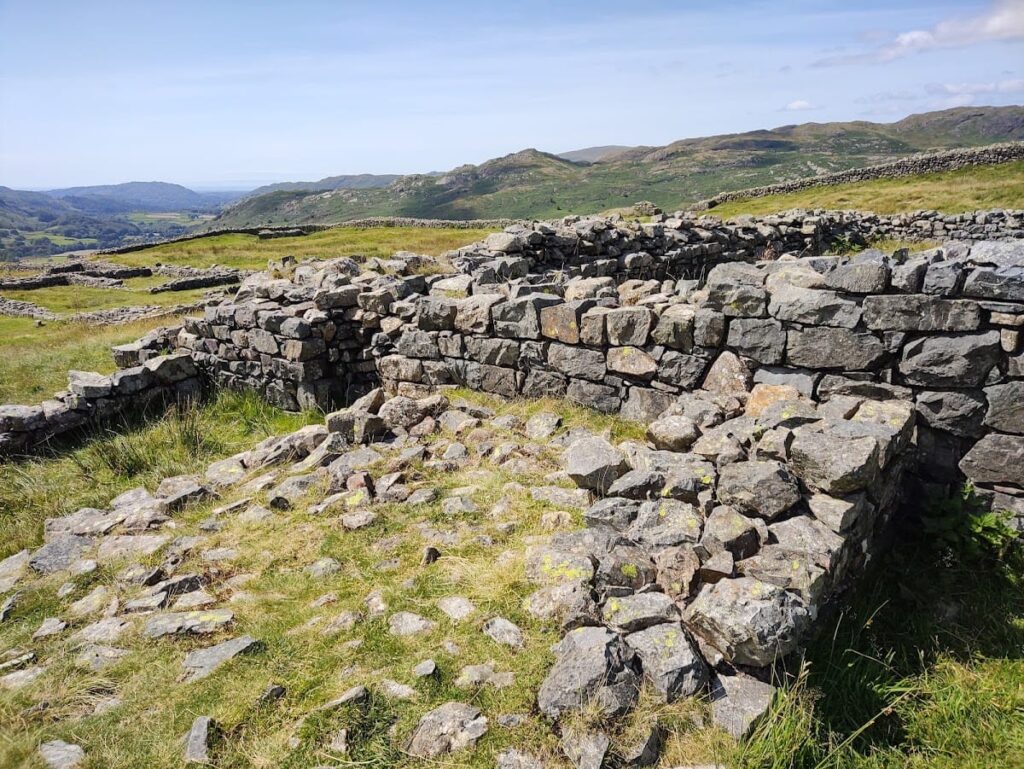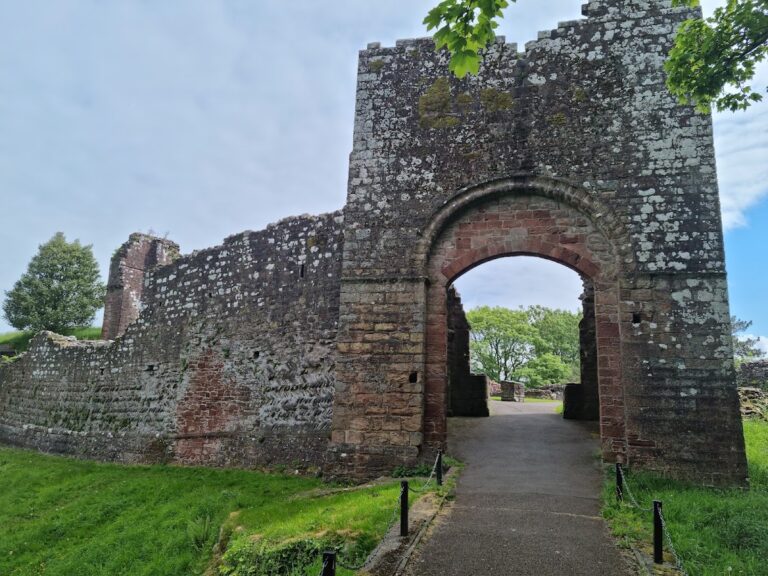Hardknott Roman Fort: A Roman Military Site in England’s Lake District
Visitor Information
Google Rating: 4.7
Popularity: Low
Google Maps: View on Google Maps
Official Website: www.english-heritage.org.uk
Country: United Kingdom
Civilization: Roman
Remains: Military
History
Hardknott Roman Fort, also known by its ancient name Mediobogdum, stands on a rocky spur above Hardknott Pass in the Lake District, England. It was built by the Romans between AD 120 and 138 during Emperor Hadrian’s rule. The fort formed part of a network securing Roman control over this rugged region and protected a vital road connecting the Cumbrian coast with the interior of the Lake District.
The fort’s first occupants were the Fourth Cohort of Dalmatians, an auxiliary infantry unit recruited from the Dalmatian coast, now modern Croatia. This unit, numbering around 500 soldiers, was tasked with overseeing travel, enforcing Roman law, and managing local unrest. Hardknott’s strategic importance declined after about 20 years, likely due to the growth of larger forts at Ravenglass and Ambleside, leading to its abandonment by the end of Hadrian’s reign.
Around AD 200, the fort was reoccupied and remained in use until the late 4th century. During this later phase, a civilian settlement, or vicus, developed outside the fort’s walls. This suggests a more permanent community supporting the military presence. The site’s name, Hardknott, has been recorded since at least the early 17th century, when antiquarian William Camden mentioned it in 1607.
Excavations in the late 19th century uncovered the fort’s bath house, though some artifacts were lost to souvenir hunters. Further archaeological work in the mid-20th century, led by Dorothy Charlesworth, clarified the fort’s layout and confirmed the garrison’s identity through inscriptions. Among the finds were leather items such as shoes and a soldier’s jerkin, preserved near the granaries in peat.
Remains
Hardknott Roman Fort covers about 1.3 hectares and is roughly square with rounded corners. Its stone walls, up to 2 metres high, are the best-preserved Roman fort walls in Britain. These walls, about 1.7 metres thick, are built from local hard rock and include ditches for added defense. The fort has four gates, one on each side. The south, east, and west gates each have two carriageways, while the north gate has a single carriageway, likely due to the steep terrain. Towers stand at each corner of the fort.
Inside, stone buildings occupy the central area. Two granaries lie to the east, featuring buttresses that support thick walls and heavy roofs designed for food storage. Opposite the south gate is the principia, or headquarters, which housed offices, regimental records, and a shrine called an aedes for the unit’s standards. Nearby is the praetorium, the commandant’s residence, consisting of one surviving stone range arranged around a courtyard. This building may have been partly timber-built or unfinished.
Most barracks were made of timber and have left little trace. About 200 metres east of the fort is a large, levelled parade ground measuring roughly 140 by 80 metres. Created by moving around 5,000 cubic metres of earth and stone, it likely served for infantry and possibly cavalry training. A wedge-shaped mound on the parade ground’s northern side may have supported a shrine dedicated to the Campestres, goddesses associated with military exercise areas.
South of the fort are the remains of a bath house arranged in a linear sequence of three main rooms: an unheated frigidarium (cold room), a tepidarium (warm room), and a caldarium (hot room) that probably contained a hot bath. Adjacent to these is a circular dry hot room, known as a laconicum or sudatorium, which may have been connected by a wooden structure. Excavations revealed painted plaster decoration and evidence of hypocaust heating, where floors were supported by small stacks called pilae. Some features were removed during early digs.
Inscriptions found near the south gate identify the garrison and confirm the fort’s construction date. Leather artifacts, including shoes and a soldier’s jerkin, were preserved in peat near the granaries, providing rare insights into Roman military life at Hardknott.










